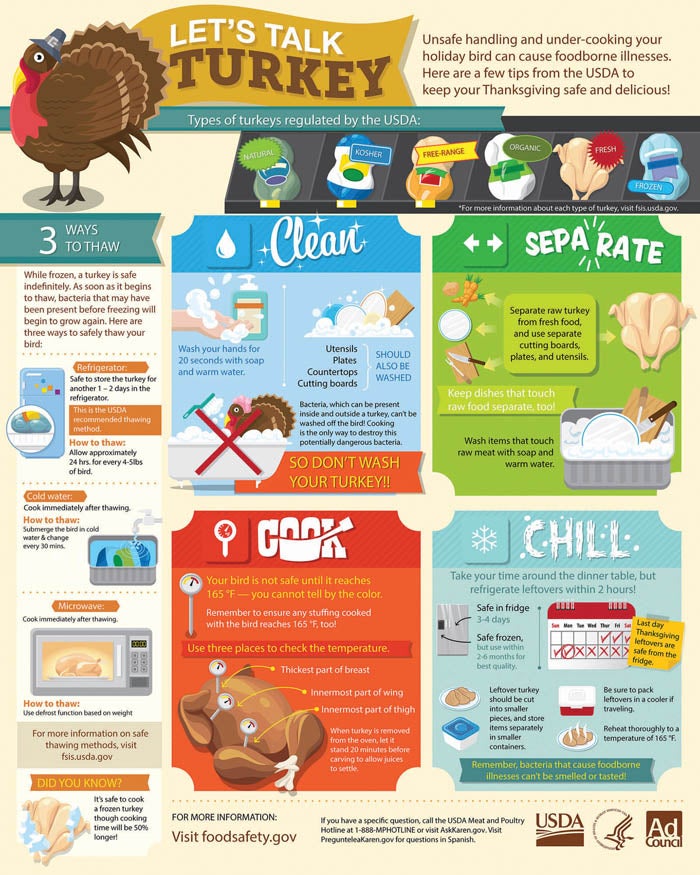Stay clean and healthy during Thanksgiving meal prep
Published 12:00 am Friday, November 16, 2018
So, we are entering the official holiday season as Thanksgiving is upon us. As we begin preparation, let us always remember that food safety is of the utmost importance.
The four basic principles of food safety are: Clean, separate, cook and chill.
Clean
Wash hands and surfaces often — this prevents the spread of bacteria throughout the kitchen. Wash hands, cutting boards, utensils, counter tops and food.
- Remember to wash your hands with warm water and soap for at least 20 seconds before and after handling food, after using the restroom, changing diapers and handling pets.
- Wash cutting boards, dishes, utensils and counter tops with hot soapy water after preparing each food items and before you move on to the next food item.
- Consider using paper towels to clean up kitchen surfaces. If you use cloths, be sure to wash them often on the hot cycle of your machine.
- Rinse fresh fruits and vegetables under running tap water, including those with skins and rinds that are not eaten.
Separate
Don’t cross-contaminate – cross contamination is how bacteria can be spread. Improper handling of raw meat, poultry, seafood and eggs can create an inviting environment for cross-contamination.
- Separate raw meat, poultry, seafood and eggs from other foods in the grocery shopping cart, bags and in your refrigerator.
- Use one cutting board for produce and a separate one for raw meat, poultry and seafood.
- Never place cooked food on a plate that previously contained raw meat, poultry, seafood or eggs.
Cook
Food is safely cooked when it reaches the internal temperature high enough to kill harmful bacteria. Use a food thermometer to measure the internal temperature of cooked foods.
- Cooks roasts and steaks to a minimum of 145 degrees. All poultry should reach a safe minimum internal temperature of 165 degrees. Always check the internal temperature in the innermost part of the thigh and wing and the thickest part of the breast with a food thermometer.
- Cook ground meat, where bacteria can spread during grinding, to at least 160 degrees. Under-cooked ground beef puts you at a higher risk of illness; remember that color is not a reliable indicator of doneness. Always use a meat thermometer to check the doneness of burgers.
- Cook eggs until the yoke and white are firm, not runny. Don’t use recipes in which eggs remain raw or are partially cooked, such as eggnog.
- Cook fish to 145 degrees or until the flesh is opaque and separates easily with a fork.
- Check to make sure there are not cold spots in food – these are areas where bacteria can survive. When cooking in a microwave oven, for the best results cover food, stir and rotate for even cooking. If your microwave doesn’t have a turntable, rotate the dish by hand once or twice during the cooking process.
- Bring sauces, soups, and gravy to a boil when reheating. Heat other leftovers thoroughly to 165 degrees.
Chill
Refrigerate food quickly because cold temperatures slow the growth of harmful bacteria. Do not over-stuff the refrigerator. Cold air must circulate to help keep food safe. Keeping a constant refrigerator temperature of 40 degrees or below is one of the most effective ways to reduce the risk of food borne illness. The freezer temperature should be 0 or below.
- Refrigerate or freeze raw meat, poultry and eggs and other perishables as soon as you get them home from shopping.
- Never allow raw meat, poultry, eggs, cooked food or cut fresh fruits or vegetables to sit at room temperature more than two hours before putting them in the refrigerator or freezer (one hour if the temperature is above 90 degrees).
- Never defrost food at room temperature. Food must be kept at a safe temperature during thawing. There are only three safe ways to defrost food: in the refrigerator, in cold water and in the microwave. Food thawed in cold water and or the microwave should be cooked immediately.
- Always marinate food in the refrigerator.
- Divide large amounts of leftovers into shallow containers for quicker cooling in the refrigerator.
These are the food safety principles that will help keep you safe this Thanksgiving and the whole year through. Remember to allow enough time for your turkey to thaw prior to cooking.
Have a happy and safe Thanksgiving and if you should have any questions about your turkey, give me a call or USDA Meat and Poultry Hotline at 1-888- MPHotline or 1-888-674-6854.
For more information on food safety contact Toi N. Degree, family and consumer education agent with the North Carolina Cooperative Extension, Rowan County Center. Call 704-216-8970 or email toi_degree@ncsu.edu




